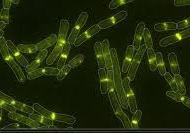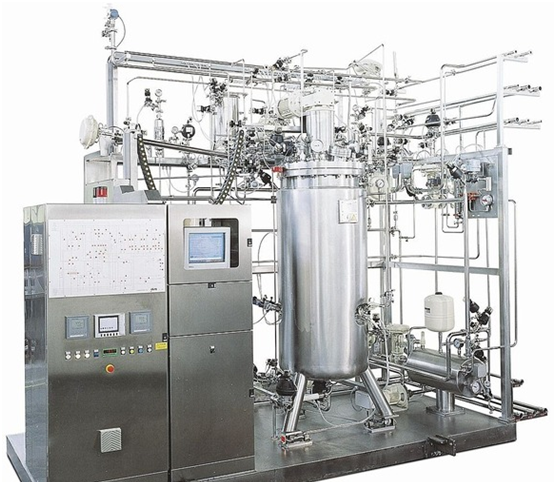Mankind has harnessed the power of microorganisms to produce countless number of products such as bread, drugs, vaccines, cheese, fuel/energy, probiotics, beer and wine to mention but a few; and many other grounds are being explored and developed using the resourceful nature of microbial cells. Microorganisms are invisible forms of life with tremendous applications in virtually all aspects of the human life.
Bacteria, fungi, viruses, algae and protozoa are basically the groups of microorganisms that are agents of infectious diseases in humans, animals and plants. However, these groups of microorganisms also benefit humanity in virtually all aspect of life, from industrial productions to production of pharmaceuticals, medicines, foods and other goods and services beneficial to mankind.
The natural environment is inundated with both beneficial and harmful microorganisms that play a variety of roles to stabilize the ecosystem. Following the birth of a newborn for example, microorganisms start to establish themselves on the body surfaces of the baby (a process known as colonization), and this continues even to adulthood, thus giving rise to some group of microorganisms (including bacteria and fungi) identified as normal microflora and which colonize the human body where they provide series of protective functions.
Normal microflora are microorganisms that colonize the internal and external body surfaces of humans without causing any pathological damage themselves. They help to keep pathogenic microorganisms at bay through their normal metabolic activities in and on the human body. Microorganisms have innumerable impact on the environment and even in the activities of man as it is responsible for a plethora of diseases in humans, plants and animals. They are ubiquitous and are found everywhere in the biosphere.
Microorganisms are known to cause both harmful and beneficial effects in the environment, and some of their advantageous properties have been exploited by man to better his lots. They influence the activities of man, plants, and animals in numerous ways, and their actions have both beneficial and disadvantageous effects on the environment. Microorganisms in the group bacteria, fungi, virus and protozoa are usually the main causative agents of infectious diseases in humans.
They also cause a range of different diseases in plants, livestock and in even in animals. However, microorganisms in the Archaea and algae group do not cause any known disease or infections in humans because they do not contain microorganisms that are pathogenic in nature. Archaea bacteria and algae in particular play significant roles in a number of photosynthetic, biodegradative and recycling activities in the ecosystem. The significance, roles or importance of microorganisms to man, plants, animals and the environment are enormous.
- Microorganisms cause disease and infections in man, plants and animals.
- Microorganisms help in the fixation of atmospheric nitrogen, an important process in the growth and development of plants.
- Microorganisms help in the decomposition of dead organic materials in the environment, and thus help to clean up waste from the environment.
- They help in the recycling of important nutrients in the ecosystem through the biogeochemical cycles.
- Microorganisms produce antibiotics which are used to kill or inhibit the growth of other pathogenic microorganisms.
- They help in the detoxification and/or degradation of harmful materials in the environment.
- Microorganisms cause food spoilage.
- Microorganisms are exploited in the field of medicine to produce drugs and vaccines used for the treatment and prevention of infectious diseases respectively.
- Microorganisms are exploited in food industry to produce some series of food products and beverages including but not limited to yoghurt, cheese, wine, beer, single cell proteins (SCPs), bread vinegar and probiotics.
- Some microorganisms are also employed in sewage treatment for to breakdown harmful substances in sewage into less harmful ones before releasing them into the environment.
- Microorganisms found in the soil help to improve the fertility of the soil, and thus improve and promote the optimal growth of plants.
- Microorganisms produce a wide variety of metabolites that are of immense medical, environmental, and industrial importance.
- Microorganisms go into association with each other to form symbiotic relationships that benefit the environment. Typical example is lichens and endophytes.
REFERENCES
Atlas R.M (2010). Handbook of Microbiological Media. Fourth edition. American Society of Microbiology Press, USA.
Balows A, Hausler W, Herrmann K.L, Isenberg H.D and Shadomy H.J (1991). Manual of clinical microbiology. 5th ed. American Society of Microbiology Press, USA.
Beers M.H., Porter R.S., Jones T.V., Kaplan J.L and Berkwits M (2006). The Merck Manual of Diagnosis and Therapy. Eighteenth edition. Merck & Co., Inc, USA.
Black, J.G. (2008). Microbiology: Principles and Explorations (7th ed.). Hoboken, NJ: J. Wiley & Sons.
Brooks G.F., Butel J.S and Morse S.A (2004). Medical Microbiology, 23rd edition. McGraw Hill Publishers. USA. Pp. 248-260.
Dictionary of Microbiology and Molecular Biology, 3rd Edition. Paul Singleton and Diana Sainsbury. 2006, John Wiley & Sons Ltd. Canada.
Dubey, R. C. and Maheshwari, D. K. (2004). Practical Microbiology. S.Chand and Company LTD, New Delhi, India.
Garcia L.S (2010). Clinical Microbiology Procedures Handbook. Third edition. American Society of Microbiology Press, USA.
Garcia L.S (2014). Clinical Laboratory Management. First edition. American Society of Microbiology Press, USA.
Madigan M.T., Martinko J.M., Dunlap P.V and Clark D.P (2009). Brock Biology of Microorganisms, 12th edition. Pearson Benjamin Cummings Inc, USA.
Mahon C. R, Lehman D.C and Manuselis G (2011). Textbook of Diagnostic Microbiology. Fourth edition. Saunders Publishers, USA.
Prescott L.M., Harley J.P and Klein D.A (2005). Microbiology. 6th ed. McGraw Hill Publishers, USA. Pp. 296-299.
Ryan K, Ray C.G, Ahmed N, Drew W.L and Plorde J (2010). Sherris Medical Microbiology. Fifth edition. McGraw-Hill Publishers, USA.
Ryan K, Ray C.G, Ahmed N, Drew W.L and Plorde J (2010). Sherris Medical Microbiology. Fifth edition. McGraw-Hill Publishers, USA.
Singleton P and Sainsbury D (1995). Dictionary of microbiology and molecular biology, 3rd ed. New York: John Wiley and Sons.
Talaro, Kathleen P (2005). Foundations in Microbiology. 5th edition. McGraw-Hill Companies Inc., New York, USA.
Salyers A.A and Whitt D.D (2001). Microbiology: diversity, disease, and the environment. Fitzgerald Science Press Inc. Maryland, USA.
Discover more from #1 Microbiology Resource Hub
Subscribe to get the latest posts to your email.



